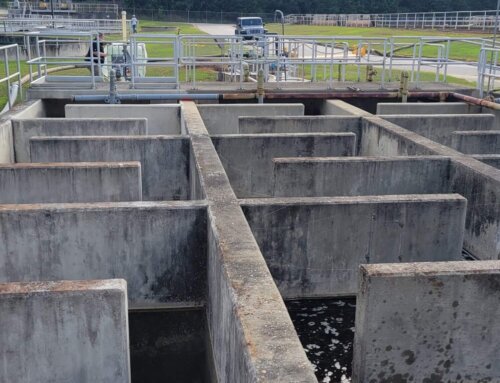The Interstate Highway System is one of the greatest public works projects in history. This great civil engineering phenomenon dates back to June 29, 1956, where President Dwight Eisenhower signed the Federal-Aid Highway Act of 1956. The bill led to the creation of a 41,000 mile National System of Interstate and Defense Highways.
Where It All Started
Eisenhower’s motivation for building this road came from the German’s Reichsautobahn system, which was an earlier adaptation of the current German Autobahn Network. During his time as a commander of Allied Forces in Europe, Eisenhower correctly deduced that a good national highway was important for national defense.
Eisenhower intended to eliminate unsafe roads, long routes, traffic jams, or anything that would interfere with speedy and safe transcontinental travel. In case of an atomic attack, Eisenhower saw that a good road network would help in quick evacuation of targeted cities.
A Man of His Word
True to his word, Eisenhower appointed General Lucius D. Clay to investigate an interstate highway system immediately after becoming president. At the time, Clay’s findings proved that the U.S needed better highways for safety, defense, and to accommodate the growing number of automobiles. His report further showed that a highway system was good for the economy not just as public works but for future growth.
For all these reasons, Clay came up with a 10 year, $100 Billion budget to complete the 41,000 miles network of highways that would connect all American cities with a population of 50,000 or greater.
Construction started 3 years later after the passage of the Federal-Aid Highway Act of 1956.
A Standard in Design
This same legislation provided for nationwide design standards which included:
- Lanes of 12 ft. in width
- A minimum of two lanes on each side
- Design speeds of 50-70 mph
- A 10 ft. right paved shoulder
Civil Engineers and the Interstate Highway System
The design and construction of the first segments of the Interstate Highway between 1950 and 1960 showcased the expertise, ingenuity, dedication, and knowledge of civil engineers who moved mountains to finish this task.
The geography of the U.S in terms of building the Interstates proved to be most challenging. Building through the Rocky Mountains to the soft delta areas of the Mississippi River required civil engineering innovation in areas of tunneling, elevated viaducts, piling and bridges.
Other problems faced by the civil engineers tasked with constructing the Interstate were mainly centered around the size, scope and time required to finish this project. The enabling committee had predicted a 13-year frame for the project but civil engineers soon learned that the project would greatly exceed earlier estimates of materials and personnel required.
And although the Federal government provided 90 percent of the cost, individual highway departments were responsible for the construction of segments within their states. However, only a few states like New York, Pennsylvania, and California were prepared for the challenge.
As a result, many agencies would later compete to hire qualified engineers who later became part of the “Interstate Generation.” State Highway Engineers recognized the interstate as a challenge and opportunity of a lifetime.
A Game Changer
In many ways, the construction of the Interstate produced significant advancements in civil engineering technology. Areas like concrete pavements, bridge design, soil mechanics, and traffic forecasting were the most affected.
For example, before the Interstates, civil engineers had limited knowledge of the proper concrete and asphalt, especially in terms of wearing and load-bearing characteristics. However, the Interstate era brought about the AASHO Road Test conducted between 1958 and 1960.
This project helped to develop better pavement design criteria for Interstate conditions.
The Interstate system also affected other engineering projects, not only those related to the highway. For example, engineers have adapted highway designs to accommodate environmental laws and regulations. The Florida Everglades is a perfect example. Also known as the Alligator Alley, this highway includes underpasses that allow animals to cross under the highway.
The Interstate Today
Today there are more than 260 million cars in the United States using the Interstate Highway System. And away from the engineering and safety accomplishments, this highway system has affected the way we conduct business, and live our daily lives.
How?
The Interstate System has given Americans freedom of mobility, and it has supported the economy since it began operation.
It is not an exaggeration, but a simple statement of fact, that the interstate system is an engine that has driven the country into 40 years of prosperity. According to The Public Purpose, the Interstate Highway System:
- Has saved at least 187,000 people
- Has prevented injuries of at least 12 million people
- Has permitted the cherished freedom of mobility
- Has returned more than $6 in economic productivity for each $1 it cost
- And enhanced international security
While Eisenhower initially allocated $26 billion for the project, building the Interstate System ended up being $425 billion and took 35 years to complete. However, over the years, many states have added to the system by constructing national highways and beltways around cities to reduce congestion and traffic.
Right now, the Interstate System comprises more than 48,000 miles of road maintained by individual states. What this means is that wealthier states tend to maintain their parts better compared to other states where you might experience uneven roads or potholes.
One for The Future?
A testament to Eisenhower’s achievement is that the vast majority of the Interstate System has withstood the test of time and continues to deliver as intended. Civil engineers will continue to address challenges in maintaining, improving and adapting the Interstate Highway System to the needs of the future.
Right now, autonomous vehicles are being tested on the roads, and the Interstate Highway System might have a huge impact on how we travel in the years to come.
At Keck & Wood, we believe that changes and adaptations in civil engineering will drive the needed shift in advancements in the construction sector.
Contact us today for all your civil engineering needs.







Leave A Comment